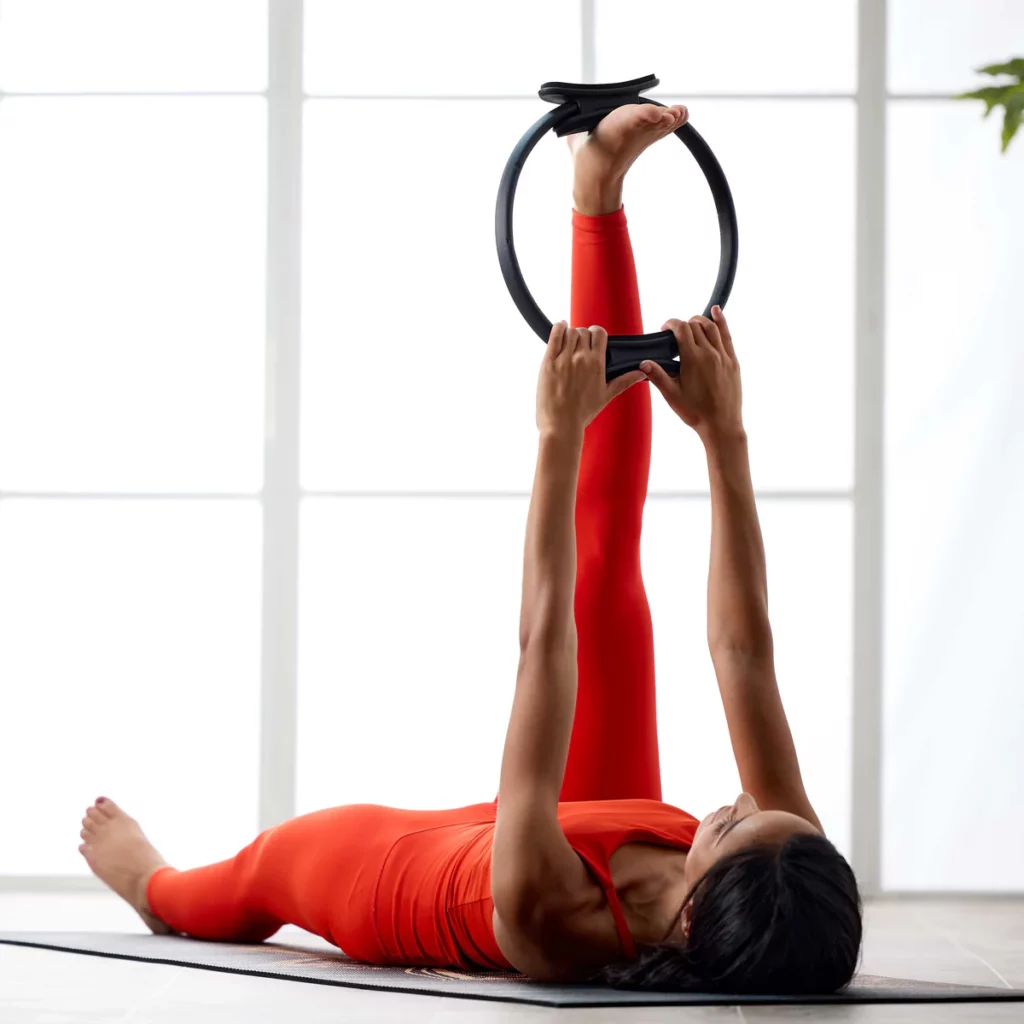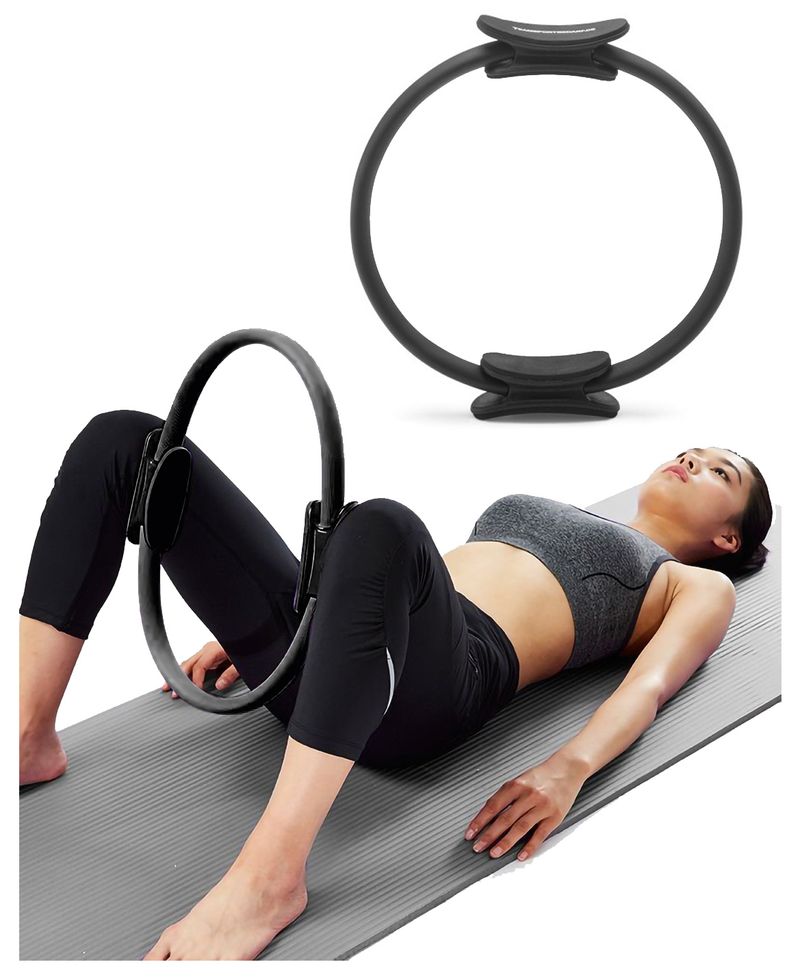Welcome to the wonderful world of Pilates! If you’re looking to enhance your workout routine, Pilates rings might just be the game-changing accessory you’ve been searching for. In this article, we’ll explore everything you need to know about Pilates rings, from their origins to how to effectively incorporate them into your workouts. So, let’s dive right in!
Understanding Pilates Rings
Pilates rings, often referred to as magic circles, are versatile fitness tools designed to help improve your workout experience. Made from flexible materials, these rings provide resistance that can enhance various Pilates exercises. They come in different sizes and strengths, making them suitable for individuals at all fitness levels.
But before we delve deeper into their benefits, let’s look at the history and evolution of these handy tools.
What Are Pilates Rings?
At their core, Pilates rings are sturdy circular devices that can be squeezed, pressed, or held during workouts. They typically feature padded handles that add comfort while allowing for controlled movements. The primary purpose of Pilates rings is to create resistance, which aids in strengthening and toning muscles as you engage in your exercises. This added resistance not only challenges the muscles but also encourages better alignment and posture, making it an essential tool for anyone looking to enhance their Pilates practice.
Moreover, Pilates rings can be incorporated into a variety of exercises targeting different muscle groups, from the arms and legs to the core. Their versatility allows practitioners to modify traditional Pilates movements, adding a new dimension to familiar routines. This adaptability makes them a favorite among instructors who seek to offer innovative and engaging workouts to their clients.
The History and Evolution of Pilates Rings
The Pilates ring was created by Joseph Pilates in the mid-20th century. Originally designed to help his clients focus on resistance and alignment, this tool quickly gained popularity among fitness enthusiasts. Over the years, the design and materials used have evolved significantly, making them more accessible and versatile than ever before. Early versions of the ring were often made from metal, which could be quite heavy and less comfortable for users. Today, modern Pilates rings are typically constructed from lightweight, durable materials like fiberglass or plastic, ensuring ease of use and portability.
Today, Pilates rings are embraced by fitness lovers around the world, both in studios and at home, proving their lasting value in the realm of exercise. They have also inspired a range of instructional videos and classes, showcasing innovative ways to utilize the ring for a full-body workout. As the fitness landscape continues to evolve, the Pilates ring remains a staple, bridging the gap between traditional Pilates techniques and contemporary fitness trends. With the rise of online fitness platforms, many practitioners are discovering the benefits of incorporating the ring into their routines, further solidifying its place as a must-have tool for enhancing strength, flexibility, and overall wellness.
Benefits of Incorporating Pilates Rings
Now that we understand what Pilates rings are and their evolution, let’s explore the myriad benefits they offer. Incorporating these rings into your routine can elevate your workouts and help you achieve your fitness goals faster.
Enhancing Core Strength
One of the most significant advantages of using a Pilates ring is the enhancement of core strength. The resistance provided by the ring requires your muscles to engage more deeply, which translates to improved stability and strength. By targeting your core, you’re not only strengthening that area but also supporting better posture and reducing back pain.
Improving Flexibility and Balance
Using a Pilates ring can also improve your overall flexibility and balance. The different exercises you can perform with the ring encourage stretching and strengthening of various muscle groups, contributing to an increased range of motion. This is especially beneficial for individuals who spend long hours at a desk or are prone to tight muscles.

Moreover, the dynamic nature of the Pilates ring promotes proprioception, which is your body’s ability to sense its position in space. This heightened awareness can lead to improved coordination and stability, making it easier to perform daily activities and reducing the risk of injury during physical exertion.
Boosting Overall Fitness Levels
In addition to core strength and flexibility, incorporating Pilates rings into your workout routine can significantly boost your overall fitness levels. The combination of strength training and resistance work helps to increase muscle endurance, making everyday tasks easier and improving athletic performance.
Plus, with the added challenge of the ring, you’ll likely find your workouts becoming more engaging and less monotonous. The versatility of the Pilates ring allows you to switch up your routine frequently, targeting different muscle groups and keeping your body guessing. This variety not only prevents workout plateaus but also helps maintain motivation, encouraging you to stick with your fitness journey.
Additionally, Pilates rings can be easily integrated into various workout styles, from high-intensity interval training (HIIT) to gentle stretching sessions. This adaptability makes them an excellent tool for individuals at all fitness levels, whether you are a seasoned athlete or just starting your fitness journey. As you progress, you can modify the intensity of your workouts by adjusting the pressure you apply to the ring, ensuring that you are continually challenged and engaged.
How to Use Pilates Rings Effectively
Ready to get started with Pilates rings? Let’s go over some effective ways to use them so you can maximize their benefits and enjoy your workouts!
Basic Exercises for Beginners
For those just starting out, incorporating basic exercises is key. Simple moves, such as the chest press and leg lifts, can help familiarize you with the ring’s resistance and the necessary grip. Begin slowly and focus on your form to ensure you’re executing each movement properly. As you grow more comfortable, you can gradually increase the intensity of your workouts. Additionally, consider integrating some warm-up stretches that target the core and major muscle groups to prepare your body for the exercises ahead. This not only enhances flexibility but also helps prevent injuries, allowing you to enjoy a more effective workout.
Advanced Techniques for Experienced Users
If you’re more experienced with Pilates, there’s a treasure trove of advanced techniques to explore using the ring. Moves like the circle extension or inner thighs squeeze can challenge your strength and coordination. Be creative; the Pilates ring can complement many exercises, adding an exciting twist to your routine! For instance, try combining the ring with traditional Pilates moves such as the hundred or the roll-up to deepen your engagement and activate different muscle groups. This fusion can lead to a more dynamic workout and keep your sessions fresh and invigorating.
Tips for Maximizing Your Workout
To truly get the most out of your Pilates ring workouts, remember to focus on breath and control. Pay attention to your breathing while executing movements, as this will aid in muscle engagement and enhance your results. Additionally, consider varying the resistance and the speed of your exercises to keep your body guessing and constantly developing. It’s also beneficial to set specific goals for each session, whether it’s improving your endurance, increasing your flexibility, or mastering a challenging move. Tracking your progress can provide motivation and a sense of accomplishment as you witness your growth over time.
Choosing the Right Pilates Ring
With so many options on the market, finding the right Pilates ring can feel overwhelming. Below are some essential factors to consider when making your selection.
Material and Durability Considerations
When choosing a Pilates ring, consider the material and its durability. You’ll want a ring that can withstand the rigors of your workouts without losing its shape. Look for high-quality materials, such as fiberglass or durable plastic, that ensure longevity and reliability.

Size and Resistance Levels
The size of the Pilates ring is another important factor. Generally, the diameter can range from 12 to 15 inches, with smaller rings offering more resistance while larger rings provide less. If you’re unsure, opt for a medium-sized ring that can accommodate a variety of exercises. Additionally, consider your fitness level and choose a resistance level that matches your strength and experience.
Price and Brand Comparisons
Lastly, be sure to compare prices and brands. While high-quality rings may come with a higher price tag, investing in a reputable brand will likely pay off in the long run. Check reviews and seek recommendations to ensure you’re choosing a ring that meets your needs and preferences.
In conclusion, Pilates rings are a fantastic addition to any fitness routine. Their versatility and effectiveness make them a must-have for individuals looking to enhance their workouts and achieve optimal results. So why not give them a try? Your body will thank you!
Related article: Reformer Pilates bed vs. Traditional Pilates: What’s the difference?
